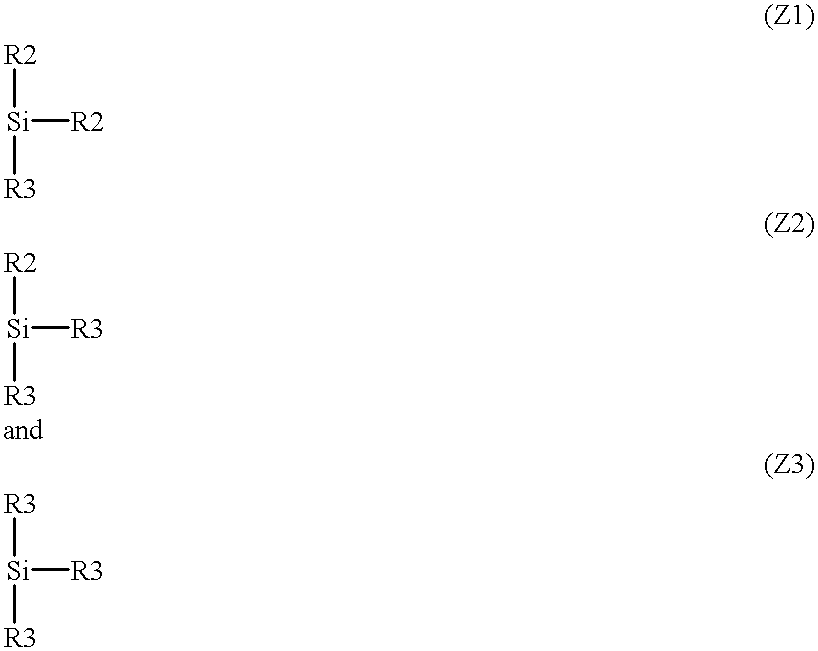Tire with tread of rubber composition prepared with reinforcing fillers which include starch/plasticizer composite
a technology of reinforcing fillers and rubber compositions, which is applied in the field of rubber composition preparation, can solve the problems of not being a good sulfur donor, not being able to use being severely limited in the use of starch as a filler, so as to improve the properties of vulcaniza
- Summary
- Abstract
- Description
- Claims
- Application Information
AI Technical Summary
Benefits of technology
Problems solved by technology
Method used
Image
Examples
example ii
Tires of size 195 / 65R15 were prepared having treads of the rubber compositions of Exs. 1, 2 and 3 of Example I for their treads. The following results were obtained as shown in Table 3. For this Table, the values for Ex. 1 are normalized to 100 and the values of Ex. 2 and Ex. 3 are normalized to those of Ex. 1; 1 being normalized to a value of 100 and corresponding values for Ex. 2 and Ex 3 being comparatively reported to the Control Ex. 1.
For the normalized values reported in Table 3, a higher value for rolling resistance means lower resistance to rolling so that a higher value is better; a higher value for treadwear means less tread wear so that a higher value is better; and a higher value for wet skid means greater traction and resistance to skidding on a wet surface so that a higher value is better. The tire handling value is a subjective test by a driver of a vehicle with test tire(s) mounted on one or more of its wheels in which a response (behavior) is evaluated to severe man...
PUM
| Property | Measurement | Unit |
|---|---|---|
| Fraction | aaaaa | aaaaa |
| Fraction | aaaaa | aaaaa |
| Fraction | aaaaa | aaaaa |
Abstract
Description
Claims
Application Information
 Login to View More
Login to View More - R&D
- Intellectual Property
- Life Sciences
- Materials
- Tech Scout
- Unparalleled Data Quality
- Higher Quality Content
- 60% Fewer Hallucinations
Browse by: Latest US Patents, China's latest patents, Technical Efficacy Thesaurus, Application Domain, Technology Topic, Popular Technical Reports.
© 2025 PatSnap. All rights reserved.Legal|Privacy policy|Modern Slavery Act Transparency Statement|Sitemap|About US| Contact US: help@patsnap.com


